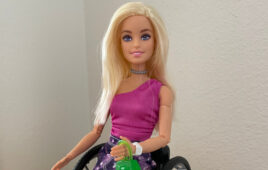Driving does more than get us from here to there; it’s key to being as
independent and involved as possible in our communities and with families and
friends. No wonder, then, that a study published in Evidence-Based Nursing concluded,
“Giving up driving was associated with an increase in depressive symptoms
among older non-institutionalised adults.”
While clients with new disabilities, such as spinal cord injuries, usually
work with occupational or physical therapists who teach them about automotive
accessibility, seniors who notice changes in reflexes or vision too often assume
they must drastically reduce or give up driving altogether.
Fortunately, adaptive automotive equipment can make driving safer and more
comfortable for consumers with a range of mobilityrelated conditions.
Finding a CRDS
The Association for Driver Rehabilitation Specialists (ADED) maintains a national
database of Certified Driver Rehabilitation Specialists (CDRS). The CDRS “plans,
develops, coordinates and implements driver rehabilitation services for individuals
with disabilities,” ADED says. These professionals usually have backgrounds
in occupational or physical therapy, kinesiotherapy or driver education, and
work for acute-care or rehab hospitals, clinics or driver education schools.
DME suppliers and complex rehab providers, however, are often better positioned
to initially educate consumers about automotive accessibility products. For
example, a senior who visits a DME supplier to purchase a rollator may not know
how his arthritis impacts his driving or how adaptive automotive devices can
help. And as with complex rehab seating & mobility, auto access needs can
vary greatly from consumer to consumer based on medical conditions and prognoses,
as well as whether the consumer wants to drive or ride as a passenger. DME suppliers
and rehab providers have a great opportunity to explain to consumers that driver
evaluations can uncover their specific needs and help indicate what sorts of
technology could help.
Inside a Driver Evaluation
According to ADED, during a driver rehabilitation evaluation, a consumer can
be assessed for the following driving-related skills and abilities:
- Vision
- Cognition (includes being able to control emotions when driving)
- Perception (defined as “How the brain interprets what the eyes see”)
- Motor coordination
- Functional ability
- Reaction time
- Coordination
- Behind-the-wheel evaluation
Because driving involves activities besides steering, accelerating and braking,
consumers can also be evaluated on their abilities to:
- Transfer in and out of the vehicle and into a wheelchair or scooter
- Reach and operate standard vehicle controls
- Open and close vehicle doors
- Store and retrieve a wheelchair or scooter
CRDS’s know how a diagnosis can impact a consumer’s ability to
drive, and what adaptive equipment may be helpful. For instance, a person with
multiple sclerosis typically needs to conserve energy and keep body temperature
under control, so part of the CDRS recommendation may be to use air conditioning
in the car and try to find assistance when loading the wheelchair. A consumer
with cerebral palsy may have a limited range of motion, exaggerated startle
reflexes and increased tone. ADED says, “A spinner knob can be attached
to the steering wheel to allow controlled steering with the use of one hand.
A left gas pedal may be used if a person is unable to use the right-foot gas
or brake. Hand controls may be indicated for the person unable to use either
foot for gas or brake.”
Enjoying the Total Driving Experience
While driving is the focus of these evaluations, providers can support the
overall travel experience by making consumers aware of adaptive automotive products
that facilitate safe transfers and positioning in the vehicle.
Shear forces, for instance, can put skin integrity at risk for drivers or
passengers who slide across automotive seats instead of completely lifting themselves
during transfers. Aftermarket automotive seat systems that swivel, turn and/or
raise and lower out of the vehicle can make transfers safer.
Pediatric car seats that offer postural support beyond that of standard car
seats can help maintain proper positioning. These are especially helpful for
larger children who’ve outgrown the car seats offered by standard retailers.
By combining the right adaptive automotive technology with expert evaluations
and consumer training, drivers and passengers alike can continue to enjoy the
ride when the open road calls.
Solutions to Start Their Engines
- The Association for Driver Rehabilitation Specialists (ADED) has Disabilities
and Driving fact sheets at driver-ed.org.
Each fact sheet highlights a different medical condition and how it could
impact driving. The fact sheets also direct consumers to the ADED Web site
to find local Certified Driver Rehabilitation Specialists. - The Web site of the National Mobility Equipment Dealers Association (NMEDA)
explains how the adaptive equipment itself works, whether consumers want to
know about deep-dish steering wheels or wheelchair securement systems. Go
to nmeda.org, click on For Consumers on the
home page, then on Mobility Solutions.

